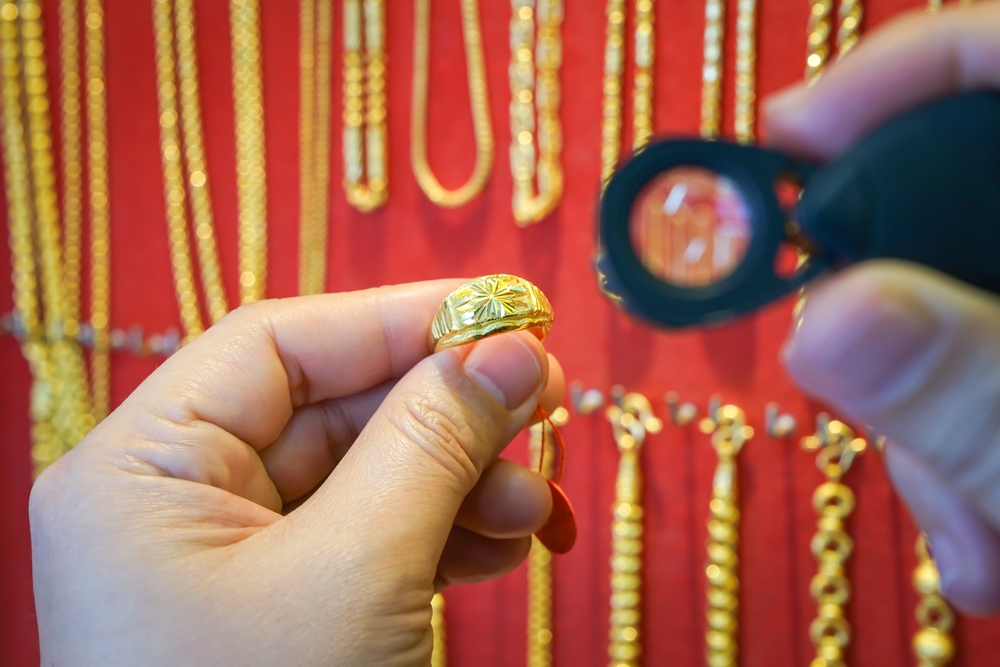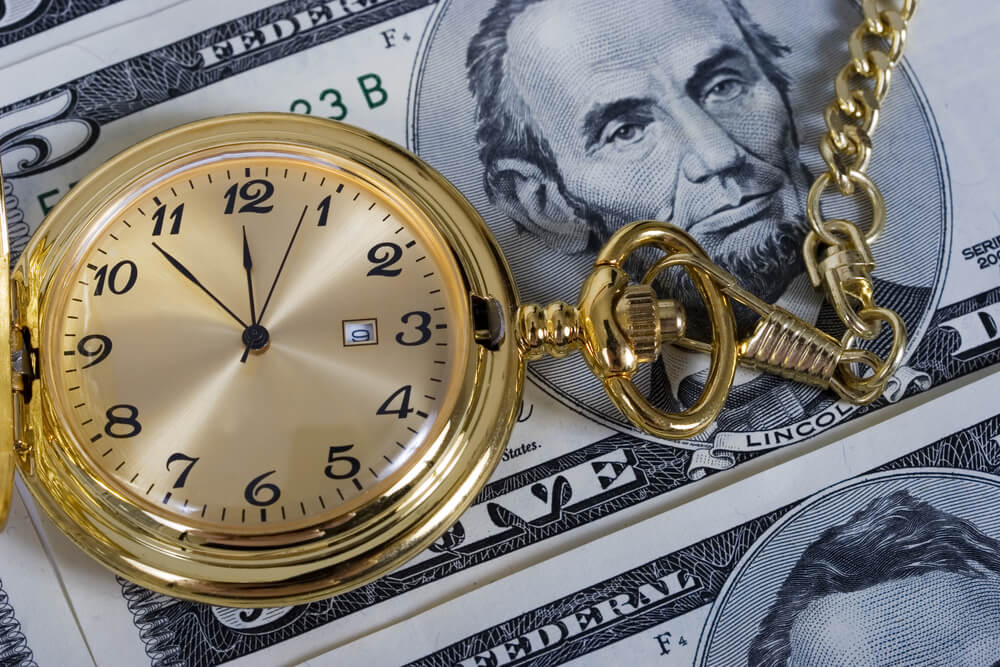
How Do You Know If It is a Fake Gold Bar?
Unlike a gold coin, a gold bar is not collectible. They are relatively big, expensive, and don’t have intricate designs that a gold coin like a gold Krugerrand can boast of. Gold bars are undoubtedly valuable metals, but they rarely sell for more than their melt values. The lack of craftsmanship on display with them is a major reason. Stories of gold bullion coins selling for a hundred times their original value are not unheard of.
Another issue with gold bars is the high likelihood of landing with a counterfeit piece. Because gold bars do not have complex designs in the form of imagery and workings around their edges, a gold bar is not hard to replicate. They typically contain inscriptions detailing the amount of gold they hold, purity levels, the mint’s name, etc.

Since faking a gold bar is not difficult, more than a handful is in open circulation, managing to deceive hundreds and thousands of unsuspecting and inexperienced gold bar buyers. This article aims to educate people about fake gold bars, so they don’t get preyed on too.
The focus will be on:
- The various ways to spot a fake gold bar
- Tools and methods to detect counterfeit gold
- Purchase decisions that reduce the chances of getting dealt a fakie, and more
Whether you’ve been defrauded before or would like to steer clear of any future traps laid by fake gold purveyors, continue to read.
Table of Contents
Signs of a Fake Gold Bar
Counterfeit gold bar makers are getting pretty good at making their products look like the real deal. They also mimic the packaging of the original versions to make their offerings a lot more believable.
But there are some definite ways to test any gold bar for its authenticity. Before delving into the various gold testing methods, try ascertaining things through some visual inspection.
Minting Irregularities
A fake gold bar is likely to have sub-par minting quality because the factories that make them do not have the funds or scale to use sophisticated equipment or new technologies, like the Royal Canadian Mint.
If you have the bar in real gold to compare side by side, the fake bar’s minting concerns will become a lot more glaring. Slight marks are fine but if the scratches are vigorous, grow suspicious. Authentic gold pieces are packaged and handled with care, and physical scars are usually not a concern.
Some mints may apply a special coating to their products or give unique finishing touches to achieve a distinct look. For instance, the Perth Mint gives its gold bars an acid wash to achieve a matte-like finish on their bars. Therefore, if you’re looking at the Mint’s bars with a shiny appearance, those are most likely fake.
Matte-finishing a gold bar is not as easy as it may sound, and most fake gold manufacturers may not be willing to go that extra distance or spend more resources and effort to get the detailing that accurate.
Packaging Errors
Inspect the packaging of the gold bar if it comes with one. Check the printing quality of the texts, the logo and graphics design, serial number, etc. The gold is most likely fake if the logo or fonts are different or the typesetting is odd. It, however, doesn’t confirm anything.
Kindly note that brands may change their logo design and packaging as a rehaul exercise. Therefore, before calling out the gold, check if the company has had any rebranding done recently.
Physical Dimensions
Gold is a dense metal. It can pack more of itself within a small space compared to most other elements. That means gold bullion bars or even coins tend to be thinner than their weight suggests.
The base metals used to make replica gold bars may not be as dense. To compensate for that, the counterfeit gold bar manufacturer could pack more of the cheaper metal to get the weight right. In that process, the bar’s size increases.
Some metals may have a similar density to gold. Tungsten has the same 19.3 g/cc density as gold. With tungsten used as the base metal, the discrepancies in weight and size between real and phony gold won’t exist, making fake gold detection based on weight extremely difficult.
Again, if there’s no actual gold bar for comparison, it would be difficult to gauge if the thickness of the gold bar under testing is suitable for its weight or disproportioned.
Read more: Credit Suisse Gold Bars
Tools/Tests to Spot Fake Gold

Getting the packaging, logo, and font style right is not impossible. If the fake gold maker is meticulous and keen on replicating the original design to the T, they can. Therefore, a gold bar that looks real and comes in genuine-looking packaging may pass the visual inspection test, but that’s not the end of the testing process.
The tests mentioned below will help ascertain whether your gold bar is real or an impostor.
Magnet Test
If you have a strong magnet handy, do a magnet test. Hold the magnet close to the gold bar. If the bar sticks to the magnet, it’s not real gold.
To confirm the magnet is strong enough, take it close to the metals and check how quickly and powerfully it pulls them toward it. A weak magnet may cause the metal to move and not physically attract it.
A magnet test is a simple way to check the authenticity of gold at home. But it’s not conclusive.
Gold is a non-magnetic metal. But the other metals in the bar could attract magnets, raising a false alarm. In other words, if your gold bar is 18 karats or lower, the other metals in it would attach to the magnet. Although not 0.999 pure gold, a 22K gold bar won’t stick to a magnet, since it is not ferromagnetic enough or doesn’t have high enough susceptibility to magnetization.
Nitric Acid Test
Gold generally doesn’t react to water, air, and acids. However, a particular combination of hydrochloric and nitric acid, called “aqua regia,” can destabilize gold and cause it to dissolve. (That’s a discussion for another day)
For the test, you’ll need nitric acid, a black stone, gold bar, and protective gear such as gloves since nitric acid is corrosive. Although you can do the test at home, it’s best handled by an expert or done under the watchful eyes of a professional.
Here are the steps:
- Rub your gold bar against the black stone until it leaves a visible mark.
- Put the acid onto the gold mark and wait 30 seconds to a minute for the acid to work on the gold residue. If the trace is not gold, the acid will completely dissolve it. If it is gold, the mark will stay.
Kindly note that there are different kinds of nitric acids for testing different karats of gold. You may also use muriatic acid (hydrochloric acid) or vinegar instead of nitric acid.
Note: The acid test may not amount to anything if the scratched bar is heavily gold-plated. That debunks the theory that a gold item leaving a yellow mark on the stone when rubbed is gold because it could just be the gold plating coming off.
XRF Analyzer
An XRF (X-ray fluorescence) analyzer is a quick, non-destructive (looking at you, nitric acid), and accurate way to test gold. Within a matter of seconds, the machine analyzes your gold bar and divulges essential information like karat weight, percentage of other elements in the piece, etc.
The drawback with XRF machines is that the testing is only a few micros under the gold’s surface. Therefore, if fake bars are heavily gold-plated, the machine would give the nod even if the base or deeper layers are not gold. So be wary.
Ultrasound Test
An ultrasonic analysis provides more in-depth information about your gold bar than an XRF analyzer or acid test. The testing methodology is premised on the fact that the time ultrasound takes to penetrate different metals varies, with the transit time differences helping glean information about the metal. The testing is quick, easy, and accurate.
To conduct the test, you’ll need an ultrasonic device, such as this REED Instruments TM-8811 Ultrasonic Thickness Gauge. Place the device’s stethoscope-like probe against the surface of your gold bar.
The ultrasonic waves travel at a particular speed when interacting with a specific metal. If it meets another material in its path, the wave returns to its origin, indicating the object’s inside and outside aren’t made of the same materials. The device conveys that information through its digital meter.
Assayer Inspection
If you don’t own gold testing tools or want a professional to attest things, head to a jeweler or gold dealer. Although the testing may cost money, the results will be conclusive. You could get a specialist’s opinion if you’re getting mixed results with the various testing methods you previously employed or would like to confirm your findings. The bullion dealer would employ some or all of the testing methods or tools above to ascertain bullion authenticity. Most of them ould be experienced and knowledgeable enough to detect a fake by looking at the piece for a few seconds through a magnifying lens.
Buying Gold Bullion Bars—Better Safe Than Sorry
Ending up with counterfeit gold products after paying actual gold prices can be truly depressing. Unscrupulous dealers know what they’re doing and will not refund your money when you raise concerns. They usually disappear or are no longer reachable once payment is clear. Therefore, finding out the authenticity of a gold bar after purchase is pretty much pointless.
To not lose your money to scammers, it’s critical to do all research before purchasing. Here are things you could do not to get tricked by a random stranger:
Don’t Buy Gold Bullion Bars Online
Do not buy gold online, particularly not on online marketplaces or sites where individuals or non-registered entities do business. Craigslist, eBay, and similar sites are wonderful platforms for various things. But those aren’t places where you buy gold. Though you can find actual gold articles, there is no guarantee, or things are contingent on the particular seller. The onus of learning more about the seller is mostly on you.
However, there are reputable online gold dealers if you know where to look for them. APMEX, JM Bullion, Money Metals Exchange, etc., are reputable dealers that guarantee gold quality and purity. Besides gold, these companies may sell silver bullion, platinum, palladium, and other precious metal bars and coins.
Deal with Approved Dealers
Purchase gold bullion at physical stores duly registered and approved by authority organizations like the London Bullion Market Association (LBMA). LBMA is a global entity setting precious metals trading standards across the globe. Their 150 member companies include the world's biggest financial institutions and banks.
For an even smoother buying experience, learn more about the particular dealer, their track record, experience, reviews, etc. It’s better to deal with a local dealer you were referred to by your friends and family after, of course, doing your research on the company.
A gold bar or coin bought at an approved dealer comes with a certificate of authenticity, proving the piece’s legitimacy.
Read more: Real vs. Fake Gold
Conclusion
Fake gold bars are a bigger problem than counterfeit coins since they weigh and cost more. However, gold bullion bars are not as regulated or organized as precious metal coins. Therefore, the buyer must do a lot more research and learn about the piece before buying one.
Although you can take respite from the fact that you can easily test a gold bar for its authenticity, it’s also imperative to acknowledge that there’s little you could do about the counterfeit gold once you find out it’s not real. Therefore, investing significant research effort and time before purchasing makes much sense.
As mentioned earlier, it’s better to be safe than sorry as a consumer, particularly with gold bars or other gold item purchases. If you land up with false gold after all the due diligence and precautions, talk to the seller and warn them of legal repercussions if they don’t respond to your calls. Don’t give up until you have tried all options to recover your money.


